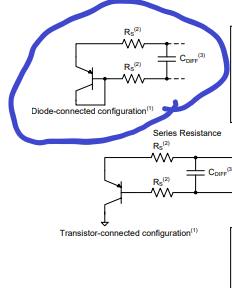Other Parts Discussed in Thread: TMP451, TMP461
Hi,
I'm using LM86CIM/NOPB to measure chip die temperature via chip integrated thermal diode. in the datasheet of LM86, There are two registers named after REMOTE TEMPERATURE OFFSET REGISTERS(RTOHB and RTOLB). What's the exact meaning of them? There are no detailed descriptions in the datasheet. My understanding is that LM86 is configured with some by-default diodes and should be re-tuned in case of any new remote sensing diode been connected. Do you have any application note about how to tune LM86 to use new diode?
Thanks!
Zhipei


